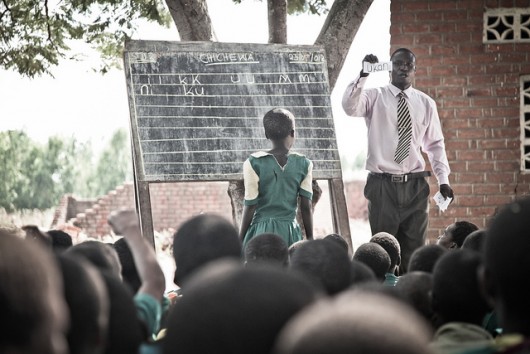International Aid Organizations Improve Global Education

To foster growth in developing countries, there has to be a focus on global education. Many children and adolescents are out of school worldwide, often due to poverty, conflict or financial deprivation. Approximately 24 million children globally will never see the inside of a classroom, according to the UNESCO Institute for Statistics.
Five international aid organizations have stepped up to expand worldwide access to educational opportunities: The World Bank, Global Partnership for Education, United Nations Children’s Emergency Fund, Global Education First Initiative and the United Nations Educational Scientific and Cultural Organization.
The World Bank currently plays a significant role in providing educational access across the globe. Since its creation in 1944, the organization has invested $69 billion globally in more than 1,500 educational projects.
Recently, the World Bank laid out the “Learning for All” plan, an education strategy focused on ensuring that all children and youth receive learning opportunities by 2020. The organization plans to double its investment in global public education by 2020, spending approximately $5 billion to improve education in developing nations
“The truth is that most educational systems are not serving the poorest children well,” World Bank President Jim Yong Kim said in an interview with Reuters. “With nearly a billion people remaining trapped in extreme poverty today, sustained efforts to improve learning for children will unlock huge amounts of human potential for years to come.”
The Global Partnership for Education works to develop effective and sustainable education systems across the globe by collaborating with national governments and development partners.
“The Global Partnership for Education supports developing countries to ensure that every child receives a quality basic education, prioritizing the poorest, most vulnerable and those living in fragile and conflict-affected countries,” the organization’s website states.
If all students in developing countries received basic reading skills, 171 million people worldwide could be lifted out of poverty, according to the organization.
Created in 2012 by U.N. Secretary General Ban Ki-moon, the Global Education First Initiative aims to strengthen global education through political advocacy.
The initiative works to reach three priority goals: ensuring that every child is in school, improving the quality of learning worldwide and fostering global citizenship through education.
“Without universal education, in other words, winning the war against illiteracy and ignorance, we cannot also win the war against disease, squalor, and unemployment. Without universal and high standard education we can only go so far but not far enough in breaking the cycle of poverty,” U.N. Special Envoy for Education Gordon Brown said in a statement on the organization’s website.
The United Nations Educational, Scientific and Cultural Organization (UNESCO) was established in 1945 to foster peace, poverty eradication, lasting development and intercultural dialogue across the globe. Education is one of the primary ways the organization aims to reach its goals.
“As a human right in itself, education is also fundamental to realizing other rights, and an enabler for reaching all the Millennium Development Goals. It plays an essential role in reducing mortality and morbidity rates; eradicating poverty and hunger; strengthening resilience to natural hazards and ending abuse, violence and armed conflict,” Olav Seim, Director of the Education for All Global Partnerships Team said in a UNESCO press release.
With headquarters in Paris and 52 other field offices, including regional bureaus in Bangkok, Beirut, Dakar and Santiago, the organization works worldwide to foster educational opportunities.
The United Nations Children’s Emergency Fund (UNICEF) is a U.N. program that aims to provide long-term humanitarian and developmental assistance to children in developing countries.
Founded in 1946, the organization aims to ensure that children have access to quality education opportunities regardless of their gender, ethnicity or life circumstances.
UNICEF works to get children back to school after emergency situations or disasters and provides educational initiatives to give children in remote areas, as well as children with disabilities or those facing social exclusion, access to education.
The organization recently launched the “Let Us Learn” campaign, with the aim of bringing educational opportunities to the world’s most vulnerable children, focusing on Afghanistan, Bangladesh, Liberia, Madagascar and Nepal.
– Lauren Lewis
Sources: Global Partnership for Education 1, Global Partnership for Education 2, Global Partnership for Education 3, Reuters, U.N. Global Education First Initiative, UNESCO 1, UNICEF 1, UNICEF 2, UNICEF 3, UNESCO 2, UNESCO 3, UNESCO 4, UNESCO Institute for Statistics, World Bank 1, World Bank 2, World Bank 3
Photo: Flickr
